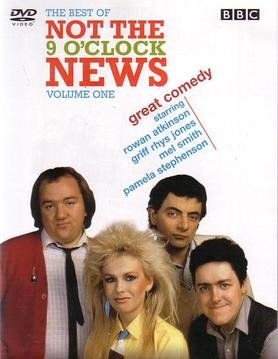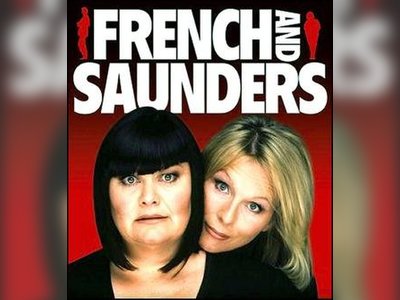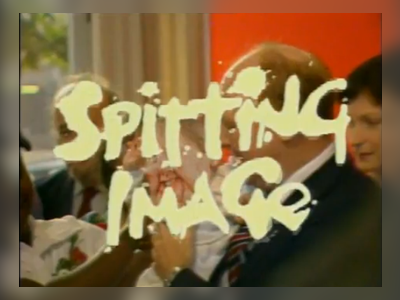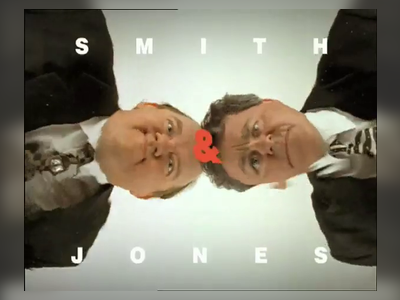British Heritage
Remember, Cherish, Learn.
beta
Not the Nine O'Clock News

Pioneering a New Wave of British Comedy.
Not the Nine O'Clock News, an iconic British television sketch comedy show, was broadcast on BBC2 from 1979 to 1982. It served as a comedic foil to the Nine O'Clock News on BBC1, punctuating the seriousness of daily news with satirical sketches, parody songs, re-edited videos, and spoof television formats. The programme, featuring Rowan Atkinson, Pamela Stephenson, Mel Smith, Griff Rhys Jones, and initially Chris Langham, took British comedy in a direction that was both bold and novel.
The innovative format of Not the Nine O'Clock News was a deliberate departure from the Monty Python's Flying Circus's stream-of-consciousness meta-comedy, returning instead to a more traditional sketch format. Sketches were mostly self-contained, often lasting mere seconds or stretching into several minutes, characterized by their grounded performance and naturalistic portrayal of characters.
The pioneering comedy series is credited with launching the careers of several notable actors and writers. It laid the groundwork for subsequent comedy series, such as the acclaimed Blackadder and Alas Smith and Jones, extending its influence beyond its original broadcast period.
The series also marked a turning point in television production techniques, making deft use of video editing and recording to heighten the comedic pace. Notably, it stirred controversy, including eliciting a complaint from Prime Minister Margaret Thatcher, with its sharp, political satires that employed strategic image editing.
Not the Nine O'Clock News was the brainchild of producer John Lloyd. His innovative concept received the green light from the BBC Comedy and Light Entertainment division, given the condition that he collaborate with Sean Hardie, a seasoned professional in current affairs at the BBC.
The show underwent various iterations and concept changes before it crystallised into its final form. It initially aimed to satirise actuality programmes, with Rowan Atkinson as an old-fashioned host lampooning modern trends. However, the programme eventually chose to emulate a news programme due to the plethora of material it provided.
Though the first series was met with critical disapproval and low ratings, the show's novel approach caught the eye of the network controller. The network's commitment to the series resulted in a second series that performed much better, both critically and commercially. The show evolved throughout its run, striking a balance between its original audacious humour and a more offbeat tone, leading to higher acclaim and recognition.
One of the defining features of Not the Nine O'Clock News was its satirical commentary on current news stories and pop culture. Whether spoofing the technical difficulties of NASA's Space Shuttle launch or lambasting the presidency of Ronald Reagan, the series mastered the art of biting political and societal satire.
These satirical sketches were bookended by a routine announcement that confirmed that the viewers were "definitely not" watching the Nine O'Clock News, a cheeky nod to the show's title and the content that followed. The mockery extended to widely recognised personalities, institutions, and events, resulting in humorous sketches that offered a critical and comedic perspective on the world.
The programme's significant contribution to British comedy and television heritage cannot be overstated. It brought alternative comedy to British television, breaking away from the traditional mould and representing a fresh, working-class comedy that contrasted starkly with other contemporary series such as The Two Ronnies. Its influence can be traced to North American comedic showcases like National Lampoon, The Second City troupes, and Saturday Night Live.
In the years following the show's conclusion, the cast members moved onto other successful projects, further underscoring the programme's role as a launchpad for talent. The programme's influence even reached American shores with an adaptation, Not Necessarily the News, which ran for seven years on the Home Box Office cable television channel.
The show's legacy is kept alive through various media, including vinyl albums, DVD releases, and books. Its critical acclaim is demonstrated by its Silver Rose at the Montreux Festival and a BAFTA Award for Best Light Entertainment Programme in 1982.
The influence of Not the Nine O'Clock News on British comedy is undeniable. It disrupted the conventional comedic narrative, offering a fresh, satirical perspective on contemporary events. The show's legacy persists in the annals of British television history, a testament to its groundbreaking contribution to British comedy.
Shaping the Landscape of British Comedy
The innovative format of Not the Nine O'Clock News was a deliberate departure from the Monty Python's Flying Circus's stream-of-consciousness meta-comedy, returning instead to a more traditional sketch format. Sketches were mostly self-contained, often lasting mere seconds or stretching into several minutes, characterized by their grounded performance and naturalistic portrayal of characters.
The pioneering comedy series is credited with launching the careers of several notable actors and writers. It laid the groundwork for subsequent comedy series, such as the acclaimed Blackadder and Alas Smith and Jones, extending its influence beyond its original broadcast period.
The series also marked a turning point in television production techniques, making deft use of video editing and recording to heighten the comedic pace. Notably, it stirred controversy, including eliciting a complaint from Prime Minister Margaret Thatcher, with its sharp, political satires that employed strategic image editing.
The Genesis and Evolution of the Show
Not the Nine O'Clock News was the brainchild of producer John Lloyd. His innovative concept received the green light from the BBC Comedy and Light Entertainment division, given the condition that he collaborate with Sean Hardie, a seasoned professional in current affairs at the BBC.
The show underwent various iterations and concept changes before it crystallised into its final form. It initially aimed to satirise actuality programmes, with Rowan Atkinson as an old-fashioned host lampooning modern trends. However, the programme eventually chose to emulate a news programme due to the plethora of material it provided.
Though the first series was met with critical disapproval and low ratings, the show's novel approach caught the eye of the network controller. The network's commitment to the series resulted in a second series that performed much better, both critically and commercially. The show evolved throughout its run, striking a balance between its original audacious humour and a more offbeat tone, leading to higher acclaim and recognition.
Content: A Satirical Take on Contemporary Events
One of the defining features of Not the Nine O'Clock News was its satirical commentary on current news stories and pop culture. Whether spoofing the technical difficulties of NASA's Space Shuttle launch or lambasting the presidency of Ronald Reagan, the series mastered the art of biting political and societal satire.
These satirical sketches were bookended by a routine announcement that confirmed that the viewers were "definitely not" watching the Nine O'Clock News, a cheeky nod to the show's title and the content that followed. The mockery extended to widely recognised personalities, institutions, and events, resulting in humorous sketches that offered a critical and comedic perspective on the world.
Legacy: The Impact of Not the Nine O'Clock News
The programme's significant contribution to British comedy and television heritage cannot be overstated. It brought alternative comedy to British television, breaking away from the traditional mould and representing a fresh, working-class comedy that contrasted starkly with other contemporary series such as The Two Ronnies. Its influence can be traced to North American comedic showcases like National Lampoon, The Second City troupes, and Saturday Night Live.
In the years following the show's conclusion, the cast members moved onto other successful projects, further underscoring the programme's role as a launchpad for talent. The programme's influence even reached American shores with an adaptation, Not Necessarily the News, which ran for seven years on the Home Box Office cable television channel.
The show's legacy is kept alive through various media, including vinyl albums, DVD releases, and books. Its critical acclaim is demonstrated by its Silver Rose at the Montreux Festival and a BAFTA Award for Best Light Entertainment Programme in 1982.
The influence of Not the Nine O'Clock News on British comedy is undeniable. It disrupted the conventional comedic narrative, offering a fresh, satirical perspective on contemporary events. The show's legacy persists in the annals of British television history, a testament to its groundbreaking contribution to British comedy.
- Not the Nine O'Clock Newsen.wikipedia.org




